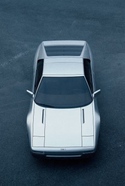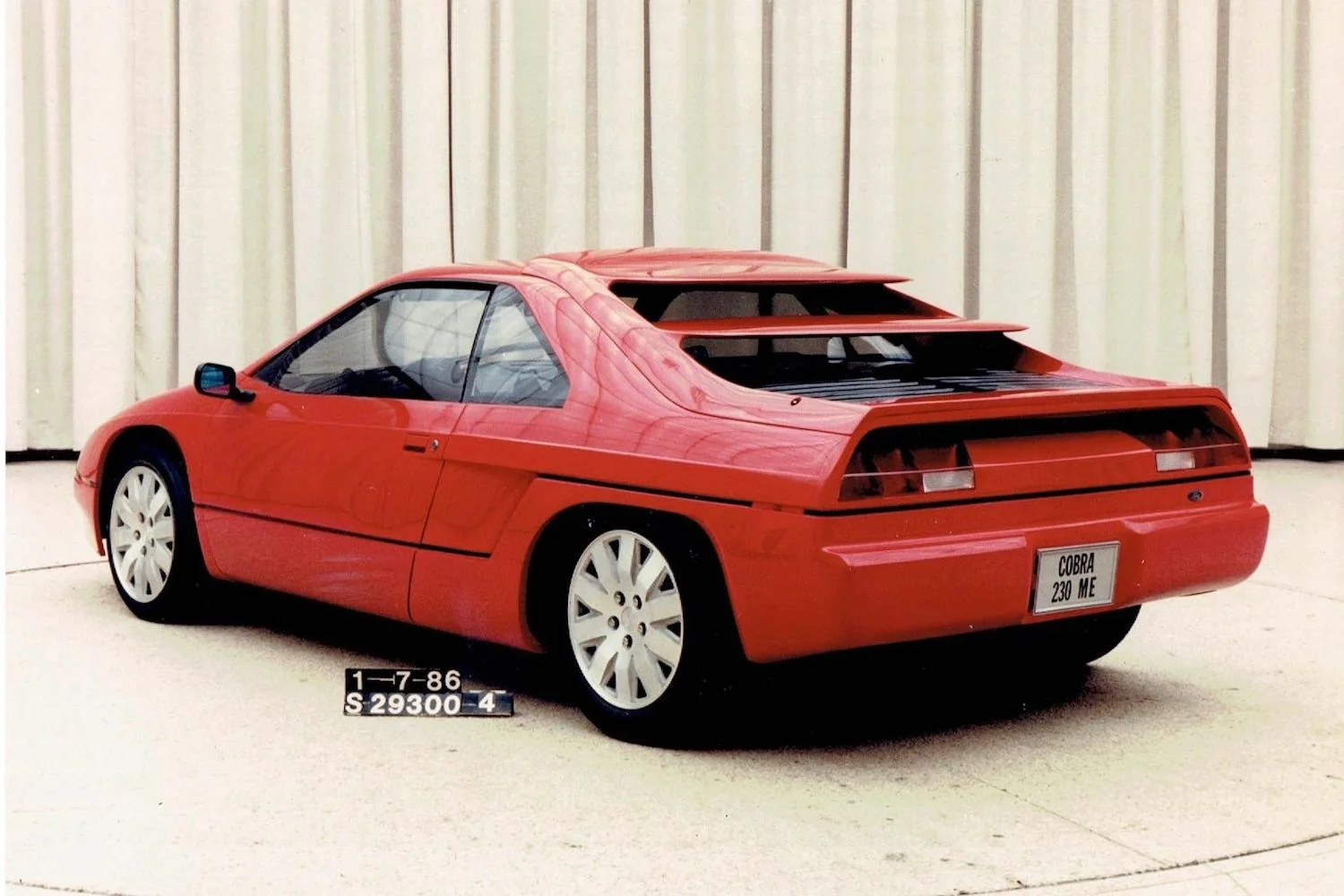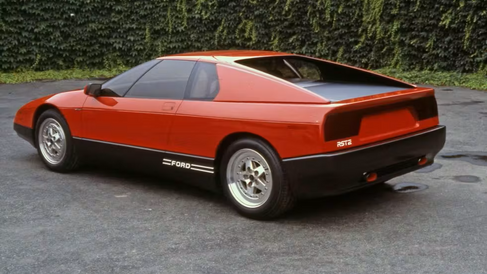Since the release of the film Ford VS Ferrari or LeMans 66 depending on the country, we now all know Ford's desire to compete with Ferrari in the 60s even though these two manufacturers do not play in the same registers. The story begins with the financial problems of the Ford Motor Company, Henry Ford II then puts pressure on his employees to find solutions. Lee Iacocca then suggested relaunching the brand in the world of motor racing. It was then envisaged that Ford would buy Ferrari which was also experiencing financial problems. Lee and several representatives of the company thus went to Italy. But the meeting with Enzo Ferrari turned into a fiasco and it was ultimately Fiat and the Agnelli family who signed the buyout agreement. The “Commendatore” is even very insulting towards the American brand and its boss Henry Ford II. This is the premise of round 1 between Ford and Ferrari.
What we know less well is that this desire to compete was also declared in the 80s but if in 66 at LeMans Ford had succeeded in realizing its desire, namely to beat Ferrari in the legendary 24 Hours LeMans race thanks to their Shelby-designed GT40.
Ford vs Ferrari: Round 2
The 1980s were a difficult time for Ford Motor Company, which found itself on the verge of bankruptcy (again) and looking to break out of its proverbial rut with exciting new products. This included a high-performance version of its best-selling Taurus sedan, the SHO, which ended up failing largely due to the success of its mainstream brethren. However, a mid-engined, Ferrari-fighting Ford performance coupe almost ended up being produced, and its story is covered in a new book by author Steve Saxty called Secret Fords Volume Two, as The Drive was the first to report.
Saxby worked in Ford's European design office in the 1980s, so he has excellent knowledge of this forgotten Ford performance coupe, which was destined to do battle not only with Ferrari, but also other sports cars vintage mid-engined cars like the Acura NSX and Pontiac Fiero. A group of Ford employees at the time decided that the G segment was a profitable place to play at the time, and that a vehicle in the $50,000 to $60,000 price range would represent the sweet spot. proverbial.
Detroit's product planners did the math; there was money to be made and an obvious place to start looking for it. They contacted Ford's Special Vehicle Operations (SVO) group, the performance division responsible for the turbocharged SVO Mustang.
To meet the brief and create something much bigger than Ford's Corvette, it needed the sophistication of a mid-engined platform and a sleek design to blend it with the Italians. Muccioli and his product planner Tom Smart identified the two most time-consuming areas needed to put the fastest Ford since the GT40 on the road: designing a suitably sleek body and a high-tech, high-tech engine. performance.

The idea was to make something better than the Corvette – more of a Ferrari or Porsche 911 type machine for Corvette money, in fact. Ford used the Ferrari 328 as a reference for this new mid-engined two-seater, codenamed Project GN34. Ford originally wanted to work with Lotus on the project before the automaker considered Mazda, but ultimately decided to develop its own custom chassis. As for the bodywork, Ford ended up paying $120,000 to Italdesign to take over its mid-engine concept, which was originally designed to replace the lightly modified Lotus Esprit, which named Maya EM (M for muletto) looked like a Mayan temple.
Maya 1984 – Italdesign's first attempt at a Ford supercar
Italdesign produced a mule of this car, but Roush and Ford also teamed up to create other prototypes. After that, Ford's Advanced Design studio stepped in and partnered with Ghia to create another design.
Model by Italdesign (left) and that of Ford International Studio (right)
Engine choices were limited. SVO visited Lotus to look at the possibility of teaming up on the next Esprit, but, unsurprisingly, Hethel had no defined plans. Ford had the Sierra Cosworth engine, but it was expensive and its turbocharged four-cylinder would never attract someone from their Ferrari V8. Ford's upcoming modular V8 engine showed promise, but too far in the future, while externally purchased engines like Porsche's V8 were ruled out for cost reasons. The most notable option was Ford's upcoming high-output four-cam V6, then designed with Yamaha for the high-performance Taurus SHO model. Its 3.0 liter capacity could be increased as needed and its sophisticated design had its own appeal against a V8.
SVO got lucky, and GN34 would use the Yamaha-Ford engine which was, in its day, one of the most advanced V-6 engines on the market. Only Honda and its V-6 VTEC engine in this latest NSX would improve on Ford's effort.
Which complicated things even more, for a vehicle with an engine built in France and a chassis in the United Kingdom.
SVO spent five months assembling the three concepts that planner Tom Smart labeled Alternative 1, 2 and 3 and their relative appeal for three references: a sporty BMW; a Porsche 944; and finally a Ferrari. The trio of GN34 alternatives - two based on Sierra and the Maya show car - were fielded in December '84. Against all odds, SVO won the day and got their wish to proceed with a mid-engined car to take on the Ferrari 308/328.
However, there was no time for pats on the back. The SVO team had only 10 months to return to the board with a finished design for program approval – the most important point in Ford's design process where the checks begin to be written for the tooling from suppliers. The program was back on track, but SVO had its work cut out for it in 1985 if GN34 was to reach buyers in 1989.
In September 85, the car was tested on the track by Ford's ultimate test driver, Jackie Stewart, three-time Formula World Champion 1.

Jackie Stewart offers comments to SVO boss Mike Kranefess
(pressed on the door) during the tests.
Ultimately, this complexity and high cost of production ultimately sealed the demise of GN34.
It was Bob Lutz himself who ultimately killed the idea of this mid-engined Ferrari fighter, as he was more interested in creating a four-door version of the Ford Bronco - which would become the Ford Explorer - instead. 'era. Unfortunately, he was right to think that the Explorer would be more profitable than a niche sports car, but we enthusiasts would obviously have loved to see the latter make it into production.

.png)



















Comments